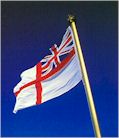
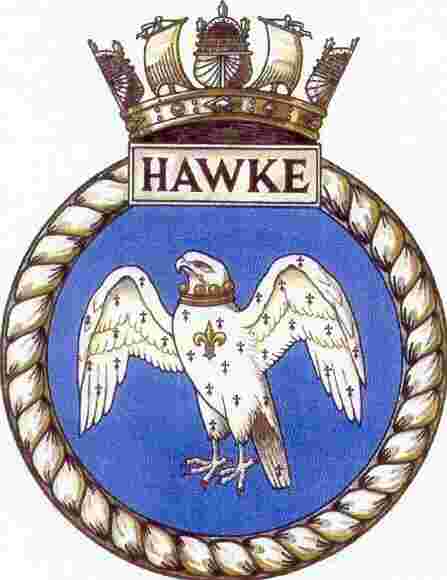


Sawkins, Claude Thomas
Boy 1st Class
J/22753
H.M.S. Hawke, Royal Navy
who died on
Thursday, 15th October 1914. Aged 17
Claude was the son of Oscar Joseph and Caroline Sawkins, who were long term residents of Langenhoe. Claude's older siblings were christened at Langenhoe Church. However, Oscar moved to Fingringhoe about the time of Claude's birth and he was christened in Fingringhoe. His relatives have continued to live in Langenhoe and a new road was named after the family. His cousins, Ruby and Kate are still residing in Langenhoe in 2000. His cousins were to fight in World War 2. Douglas joined the Royal Tank Regiment and was captured in the Fall of France. He spent the war in Stalag VIII B, POW camp. His brother Tom also served in tanks in North Africa and Italy. Another brother, Fred was a corporal in the RAF Police, he died at the age of 92. In fact his cousins at one stage were the oldest family in Great Britain, the combined ages of the eight siblings was 685 years.
Claude and his eldest brother both completed their initial training as boys at H. M. S. Ganges, a shore training establishment at Shotley. his brother went on to serve on H.M.S. Vengeance, the same ship as Ernest Fryer.
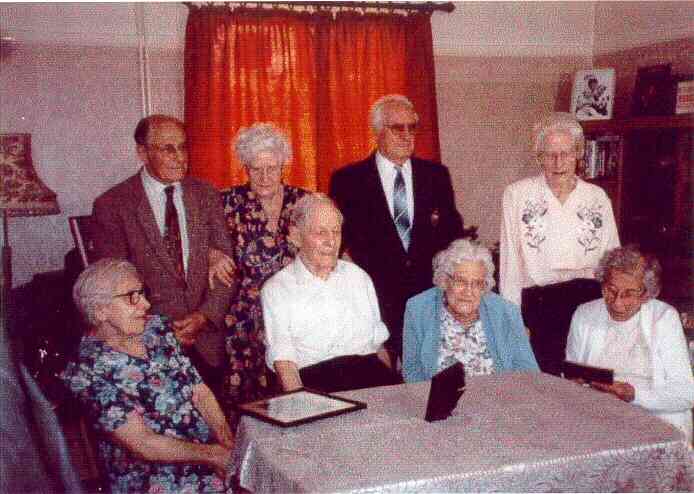
Claude's Cousins:- back row left to right, Tom, Betty, Douglas & Ruby. Front row, Kate, Fred, Jessica & Eleanor
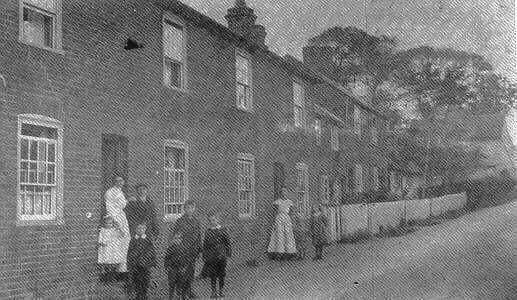
These houses were on the west side of the causeway and were the homes of not only Claude's father Oscar but also the Greenleaf & Wyncoll families, who lost sons in World War 1.
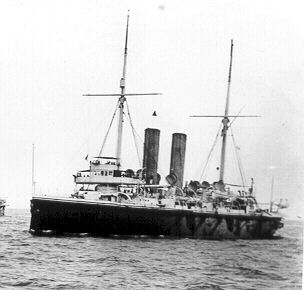
H.M.S. Hawke
H.M.S. Hawke was an old armoured cruiser operating as part of the 10th Cruiser Squadron assigned to the Northern Patrol. She had originally been launched at Chatham in 1891 and was one of the oldest ships still in service. H.M.S. Hawke was being used as a training ship and had many young cadets on board. She had been recommissioned in February 1913 with a nucleus crew and had come up to her full complement on the outbreak of war in August 1914. During September 1914, she had visited Lerwick.
On the fateful day she was in the northern waters of the North Sea with a similar ship, H.M.S. Theseus when they were attacked. They were operating on October 15th 1914 without a destroyer screen. Unfortunately they were slower than the submarine U9, which was tracking them. Their position was some 60 miles off Aberdeen. At the time, H.M.S. Hawke had just turned to intercept a neutral Norwegian collier.
The U-Boat Commander was Lieutenant Weddigen. He missed the Theseus with his first torpedo but unfortunately hit H.M.S. Hawke amidships near a magazine. The detonation was followed by a second terrific explosion, in which a large number of the crew were killed. The ship sank within 5 minutes and was only able to launch one ship's boat. Five hundred and twenty five perished, including Claude. Only the 49 men in the long boat were saved. They were picked up 3 hours later by a Norwegian steamer. H.M.S. Theseus was under strict Admiralty orders not to attempt to pick up survivors, as only several weeks earlier there had been a disaster. On that occasion, on the 22nd September, both H.M.S. Hogue and H.M.S. Cressy had also been torpedoed when going to pick up survivors from H.M.S. Aboukir. The submarine that had sunk these three ships had again been Lieutenant Otto Weddigen.
However, had they had sufficient time to launch other lifeboats from H.M.S. Hawke, then undoubtedly more would have been saved by the Norwegians.
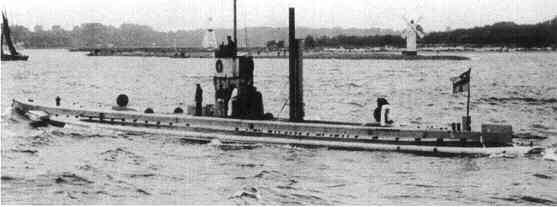
U-9 was the only U-Boat to survive the war.
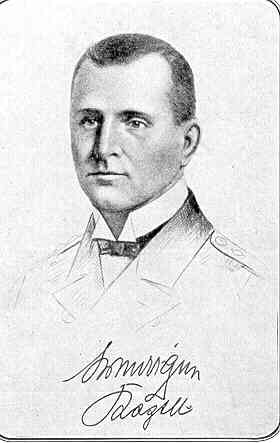
The U9's commander, Lieutenant Otto Weddigen.
Lieutenant Weddigen was commander of U 29, the following year, when he was caught in Pentland Forth on March 18th. H.M.S. Dreadnought managed to ram the submarine and sink her.
There were 2 other local young men, who died with Claude on H.M.S. Hawke. Marshall Claude Allen, J/22871, was a Boy 1st Class, aged 19. He was the son of Bathsheba Jane Goodwin, who lived in the next parish to the north - Berechurch. Fred Bitten, L/4948, was an officer's steward 3rd Class, aged 20. He was the son of Ann Bitten of 8 Horkesley Crescent, Horkesley, Colchester.
It is a sad coincidence, that two other young men from the next parish, West Mersea, had been lost when U-9 had sunk H.M.S. Cressy and H.M.S. Aboukir. Leading Stoker Thomas Edward Funnell was lost on H.M.S. Aboukir and Yeoman of Signals Ralph Mussett (also known as R. Cutts Avis) died on H.M.S. Cressy. Additionally Seaman Willie Edward Cook from Regent Street in Rowhedge was also lost on H.M.S. Cressy aged 30.
Claude earned the British War Medal & the Allied Victory Medal. He would also have been entitled to the 1914- 1915 Star.
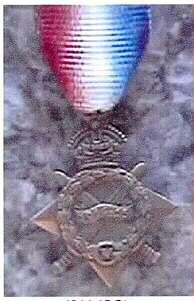
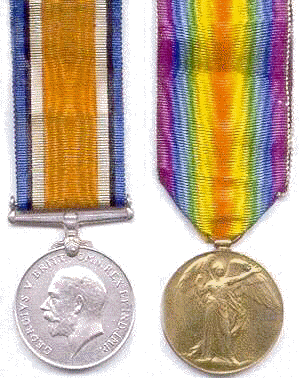
Claude is commemorated at Saint Andrew's Church, Fingringhoe on the Town Hall Memorial at Colchester and at the CHATHAM NAVAL MEMORIAL PANEL 3.
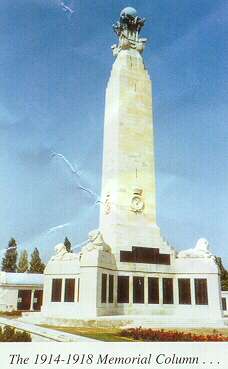
The Memorial overlooks the town of Chatham and is approached by a steep path from the Town Hall Gardens.
POSTSCRIPT- WORLD WAR 2
The following is a newspaper report (possibly in The Daily Mail) from 1940, describing the action where Claude’s cousin Dougie was captured in the Second World War at Calais :-
THE MEN WHO FOUGHT FOR CALAIS
British forces, ordered to hold Calais during the German invasion, had little sleep or rest for six days; ran short of food, water and ammunition; and then refused a demand to surrender after fighting an enemy superior in number and metal for four days.
The battle ended on the night of May 26th with the defeat of the British - but that defeat meant a victory farther along the coast at Dunkirk.
For by their action the Calais defenders drew off two heavy armoured divisions- and possibly a third- sent out to cut off the British Expeditionary Force. The four days’ battle meant that men of the B.E.F. were able to embark and return to safety.
The defenders of Calais were a battalion of the 60th Rifles, a battalion of the Queen Victoria’s Rifles and a battalion of the Royal Tank Regiment. The overwhelming superiority of the Germans never really gave them a chance, and that they held the enemy for so long was a remarkable feat of arms. Masses of refugees pouring into and out of the town, and the immense difficulties of controlling street fighting under such conditions, added to the confusion.
After the demand to surrender had been refused, a heavy bombardment and almost incessant dive-bombing reduced the defensive position and inner harbour to a blazing shambles. By 4p.m. the enemy had taken all the dock area. The Rifle Brigade Headquarters, the Rear Brigade Headquarters and a portion of the Queen Victoria’s Rifles were captured. An hour later French troops in the Citadel had surrendered and Advanced Brigade Headquarters were captured, including the Brigadier. Fort Risban, to the west of the town had also fallen.
The 60th Rifles were surrounded by 6p.m. They split up and tried to hide in the ruined town to escape at night, but flames lit up the darkness and the Germans were all around in great strength. But after the battle: An officer of the 60th Rifles, two brigade staff officers, and seven French soldiers escaped in old motor-boat.
Dougie’s mother received the dreaded telegram below:-

It was several months of anxiety before she learnt he was a prisoner.
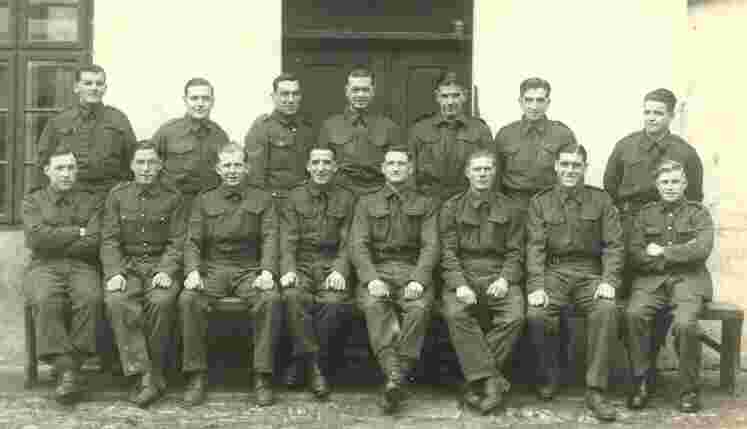
Dougie is 2nd left back row, Stalag VIII B
Claude also had another cousin living in Abberton, who was taken prisoner by the Germans in World War 2. This was George Carrington, (Service Number 91090) who joined the R. E. M. E., as a volunteer and fought in Crete in 1942. The island was ultimately invaded by German paratroops after a bitter defence by Greek, British & ANZAC Forces. Of some 22,000 paratroops dropped by the Germans about a quarter were lost. At one stage, people normally considered support troops such as cooks, drivers & clerks fought as infantry to try and repel the invaders.
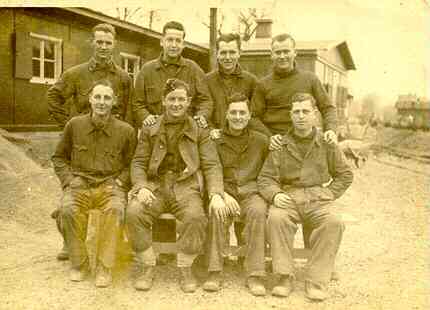
George is extreme right in the front row. this is taken at Stalag V11 A in Bavaria. The camp was split in 3 sections, one for Officers, one for new arrivals and the main camp where George was held had 3,458 British and 52 American other ranks in 1944. George was a keen member of the camp concert party appearing in the 1942 Pantomime "Me and my Girl" & the review below "New Faces".

George is 3rd from the right in the middle row.
George was born 3rd January 1911. His father was George Carrington, a market gardener, and Ellen (nee Sawkins). George married Aiens Elsie Sibley in 1936 and died 27th March 1987.
REFERENCES
Information and photo of Chatham Memorial obtained from The Commonwealth War Graves web site. www.cwgc.org/
* The photo of H.M.S. Hawke was kindly provided by "Maritime Photo Library", 8 Jetty Street, Cromer, Norfolk NR27 9HF, who retain copyright.
The picture of the cottages has kindly been provided by Brian Jay from his collection of old postcards.
The picture of Lt Weddigen is from "The Great War"
The picture of U-9 is reproduced with permission from the site "World War Naval Combat".
The above site includes the story of the earlier encounter between U-9 and the 3 British cruisers.
The pictures of the medals were kindly provided by Worcestershire Medal Service Ltd.
The pictures of George Carrington were kindly loaned by his family.
09/27/02 last updated
**********************************************************
These pages are dedicated to the memory of the Fallen from the two World Wars, who lived in Abberton & Langenhoe.. Prepared by Saint Andrew's Parochial Church Council. November 11th 2000